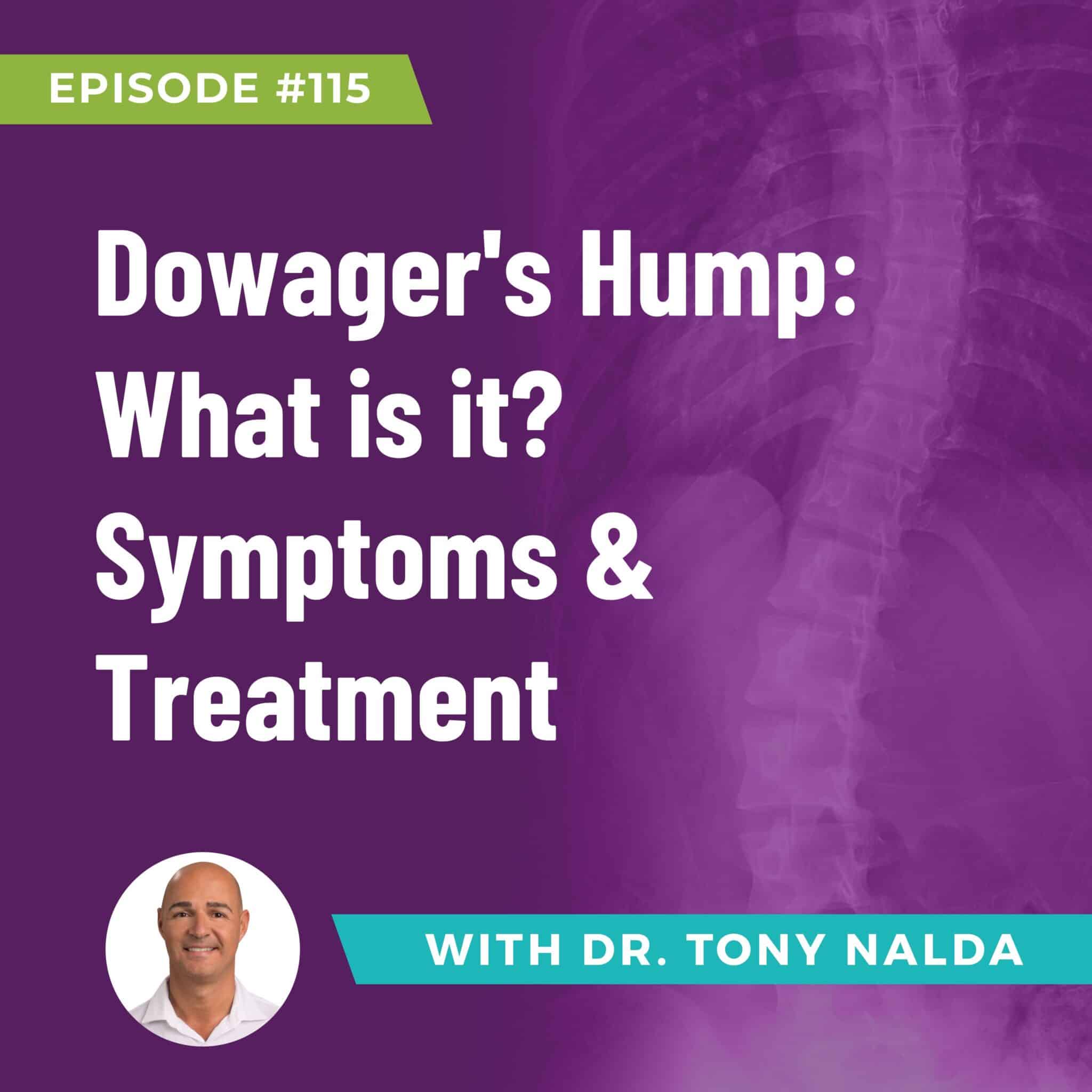Episode 115: Dowager's Hump: What is it? Symptoms & Treatment
When discussing spinal conditions like scoliosis and kyphosis, one term that frequently arises is "dowager's hump." Although it’s an old term, it specifically refers to an excessive forward curvature in the upper thoracic spine, also known as hyperkyphosis. This condition is most prevalent in women, particularly as they age and experience changes in bone density and hormones related to menopause. Compression fractures can also contribute to the development of a dowager's hump.
Understanding Dowager's Hump
Dowager's hump, or hyperkyphosis, affects the upper thoracic spine, causing a noticeable rounding of the upper back. While a healthy spine naturally has a slight kyphosis (curvature) in the thoracic region, this typically ranges from 20 to 40 degrees. When the curvature exceeds this range, it is classified as hyperkyphosis. This excessive curvature can significantly impact posture, causing the shoulders to round and the upper back to bend forward.
Symptoms of Dowager's Hump
The symptoms of hyperkyphosis or dowager's hump extend beyond cosmetic concerns and can include:
- Postural changes - Noticeable rounding of the upper back.
- Coordination and balance issues - Abnormal posture can affect balance and gait.
- Numbness and tingling - This can occur in the feet and legs.
- Fatigue - Due to overworked posture muscles.
- Pain - In the upper back, neck, and sometimes lower back due to uneven weight distribution.
- Respiratory issues - Severe hyperkyphosis can limit rib expansion, affecting lung function.
- Bladder and bowel issues - In extreme cases, hyperkyphosis can compress internal organs, affecting their function.
Diagnosing Dowager's Hump
Diagnosis typically starts with observing postural changes, particularly in children and young adults. In older adults, back pain and radicular pain (pain radiating from the spine) are common indicators. The diagnostic process includes:
- Physical Examination - Includes patient history, posture, and gait analysis.
- Adams Forward Bending Test - Observing the spine’s curvature from the side.
- X-rays - To measure the degree of kyphosis. A curvature over 50 degrees is considered hyperkyphosis.
Treatment Options
Historically, hyperkyphosis has been treated invasively with spinal fusion surgery, particularly in younger adults. However, as patients age, the risks and complications of surgery increase, making non-surgical treatments more favorable. Fortunately, non-surgical treatment options have advanced significantly.
Non-Surgical Treatments
- Chiropractic Care - Specific adjustments to manage hyperkyphosis.
- In-Office Therapy - Targeted therapies to improve spinal alignment.
- Home Exercises - Designed to strengthen posture muscles and improve flexibility.
- Corrective Bracing - Helps to manage and reduce curvature by inducing flexibility.
The primary goal of non-surgical treatment is to increase the flexibility of the kyphotic curve, which can lead to significant improvements. Early intervention is crucial as smaller curves are easier to treat, and younger patients respond better to treatment.
Being proactive about diagnosing and treating hyperkyphosis is essential. If you suspect you have a dowager's hump, seek a diagnosis promptly. Early treatment can prevent the curvature from progressing and preserve spinal function and overall health throughout your life.
For more detailed insights into spinal conditions like hyperkyphosis and other treatments, tune in to Dr. Tony Nalda's podcast.
Artlist.io 847544
Podcast: Play in new window | Download
Subscribe: RSS
Dr. Tony Nalda
DOCTOR OF CHIROPRACTIC
After receiving an undergraduate degree in psychology and his Doctorate of Chiropractic from Life University, Dr. Nalda settled in Celebration, Florida and proceeded to build one of Central Florida’s most successful chiropractic clinics.
His experience with patients suffering from scoliosis, and the confusion and frustration they faced, led him to seek a specialty in scoliosis care. In 2006 he completed his Intensive Care Certification from CLEAR Institute, a leading scoliosis educational and certification center.
About Dr. Tony Nalda
 Ready to explore scoliosis treatment? Contact Us Now
Ready to explore scoliosis treatment? Contact Us Now








